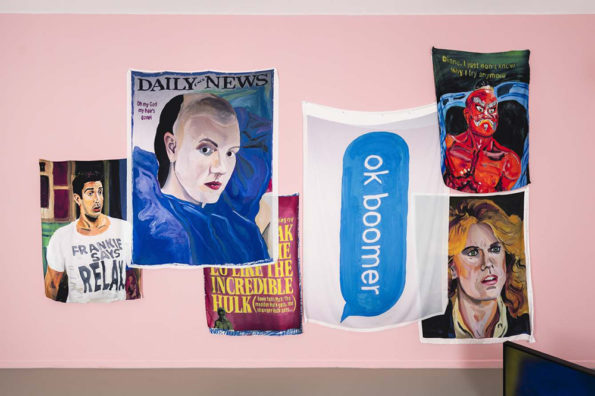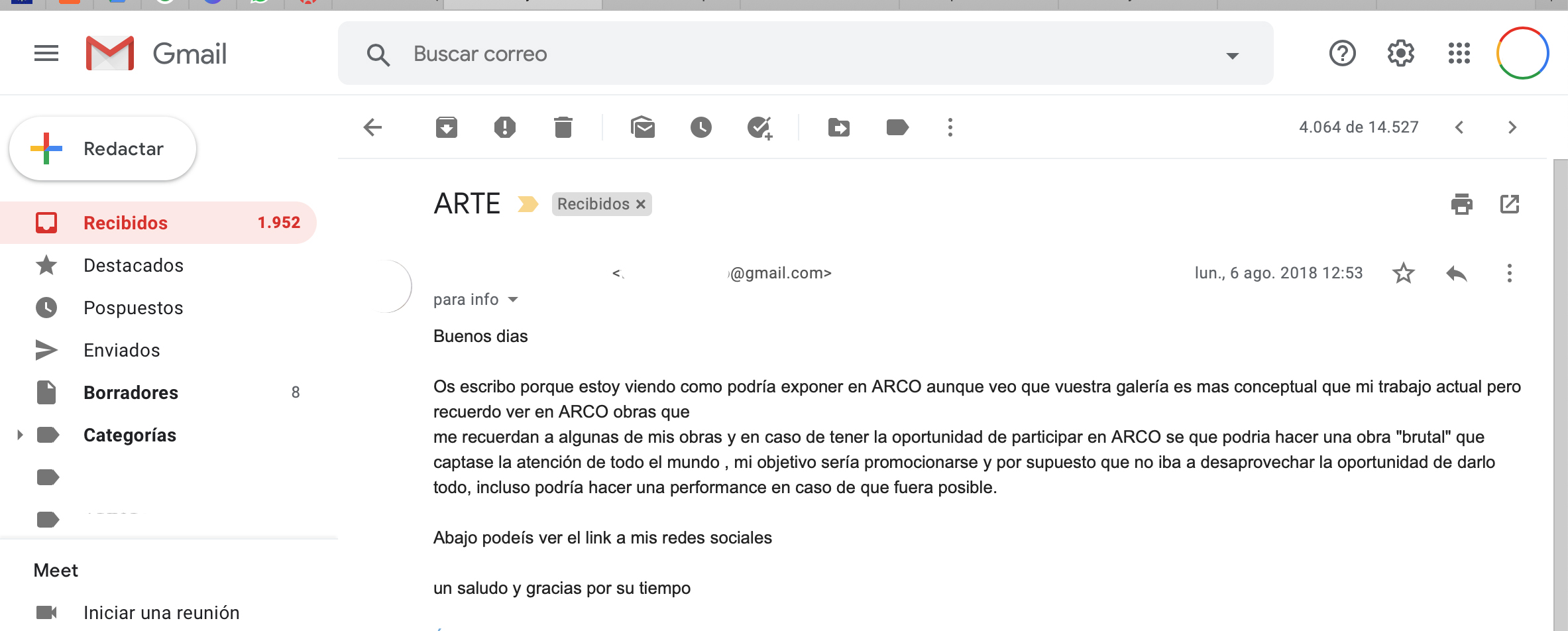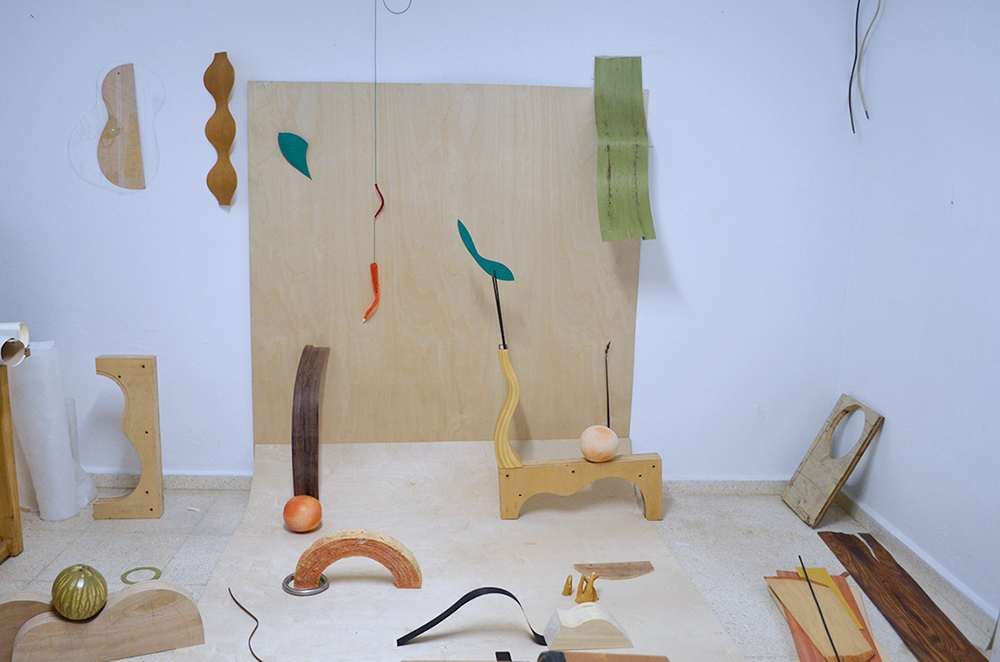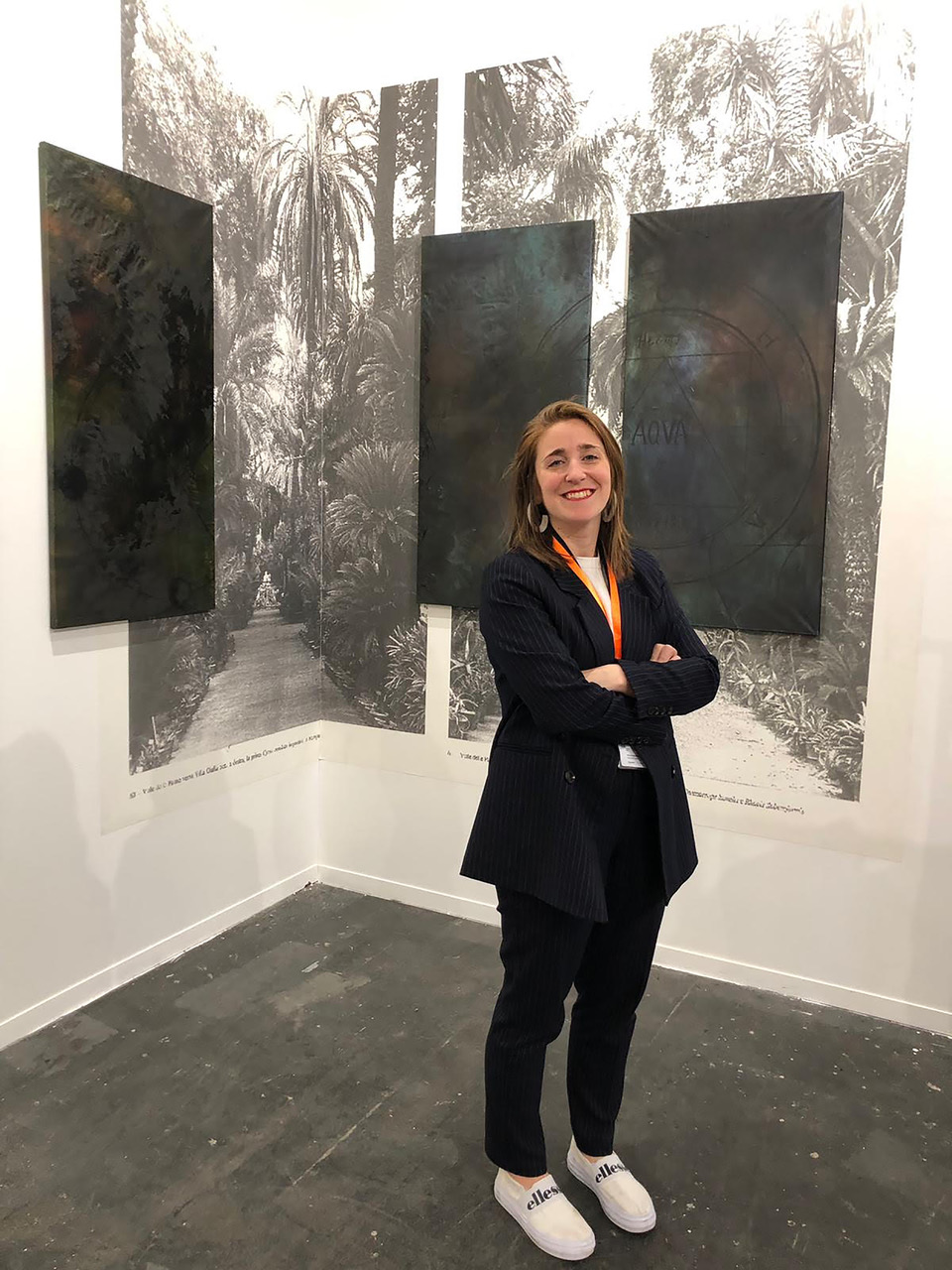Search
To search for an exact match, type the word or phrase you want in quotation marks.
A*DESK has been offering since 2002 contents about criticism and contemporary art. A*DESK has become consolidated thanks to all those who have believed in the project, all those who have followed us, debating, participating and collaborating. Many people have collaborated with A*DESK, and continue to do so. Their efforts, knowledge and belief in the project are what make it grow internationally. At A*DESK we have also generated work for over one hundred professionals in culture, from small collaborations with reviews and classes, to more prolonged and intense collaborations.
At A*DESK we believe in the need for free and universal access to culture and knowledge. We want to carry on being independent, remaining open to more ideas and opinions. If you believe in A*DESK, we need your backing to be able to continue. You can now participate in the project by supporting it. You can choose how much you want to contribute to the project.
You can decide how much you want to bring to the project.

In these present times, it seems that new artists are emerging; profiles on Instagram with an emerging surname, some known in the local or national spheres, and very few internationally, who struggle to be selected in a call, a contest or a residency before the longed-for age of 35.
“Emerging” is used with a connotative character that, when hearing the word, automatically makes us understand that the artist is just starting out and that most probably he or she has not yet had an exhibition in an institution and may not have worked or exhibited with any gallery. However, some of these first experiences can be used as floats, which allow the artist to make mistakes or to make works that do not follow the same line of work, “because he or she is starting out, finding himself or herself”.
We can stipulate the beginning of an artistic career in the last years of university (for those more precocious), and in the two years after obtaining the degree for the rest, many of whom study at the same time for a master’s degree in creation or artistic production, where they acquire new knowledge regarding their previous years of training. Therefore, during those university years or when it is recently finished, it is when the artist begins to try to enter the local artistic spheres so he or she can later apply for national calls, and even some that are ahead begin to look for recognition options abroad. An artist has roughly 13 years[1] on average to prove to the critics, as well as to the rest of the agents of the contemporary market, curators, gallery owners, museum directors, collectors, etc., that they have to believe in his or her work so that once the age limit in many calls is reached, the artist can maintain himself or herself because of the sales of produced works or the production of works in a directly institutional context.
The Generación 2020 exhibition has recently been closed; a reference point in the Spanish emerging contemporary art that just like its British analogous, Bloomberg New Contemporaries[2], selects the artists that the jury considers meet the requirements to be the artistic generation of the moment, as the Spanish edition says.
One of the many questions that arise before these selected artists is the following: “How to continue to grow once this recognition has been earned?”. Since the moment they were called to communicate privately the selection to the exhibition of their project in public, many of these artists have received the long-awaited calls from interested gallery owners in presenting their work at an upcoming exhibition in their vicinity or in a fair, and the most immediate, because of its proximity to the calendar and for its national and international relevance, is ARCOmadrid.
However, what about those artists who turn 35 but are not selected for such a contest? If we take into consideration that eight artists[3] are selected every year and approximately 300 to 400[4] future artists finish their studies of Fine Arts in Spain, the chances of appearing in that short list of chosen artists are inevitably reduced.
Entering the contemporary art market is difficult for the young artist, although on certain occasions they have been able to enjoy premature success due to their mentors, professors, colleagues or acquaintances who have shared their knowledge with them and helped them in their development. Despite this, there is a suppressed need for interest in the lucrative development of the work of art as such from the very first years. That is why nowadays there are still wrong moves from artists who want to enter the art spheres. They occur due to a lack of knowledge of the steps to be taken so that the agents participating in the local, national and international scene, find out about the works of art without the artist having forced a presentation[5]. The direct approach to art galleries, curators or critics through the sending of dossiers, portfolios or mails, gives a reaction contrary to that expected by the artists, since this approach by the artist shows the disinformation that he or she has regarding the procedures that have to be followed for the movement to be produced on the contrary. The art expert should be the one contacting the artist to propose his or her work in an article, a call or an exhibition, among many other possibilities of collaboration.

Email received at an art gallery by an artist. August 2018.
During the formative stage, and later, the importance of sharing, in addition to knowledge with their colleagues (not only artists, but also designers, educators, restorers, critics and curators, among many other professions), the workplace is vital for the artists, since their growth is often parallel to those with whom they share space and time, since there is a reciprocal nutrition of knowledge at all times. That is why the studio of the artists is necessary for the development of their artistic practice; to be able to invite curators, critics or collectors over to support them in the beginnings of their career, getting a new audience from scratch that will follow them and support them in their growth.

Cristina Mejías: Studio visit, 2020. Madrid.
The long road to success is mainly made up of a great development process in which artists need to improve their skills and social relationships ―this is also crucial for their progress. How to approach an art gallery, make a portfolio or apply for a grant; these are just three of the many doubts that emerging artists address every day. Prevailing over all of them is the importance of knowing how to explain their work.[6]
The lack of information, along with the suppressed precariousness within the most emerging strata of the spheres, often lead to the need to look for work outside the field of artistic production in order to be able to afford the studio and the creation of new artistic pieces, which in many cases leads to a reduction in artistic production and will also affect the participation and the selection in calls, since the time to submit applications will be limited.
The direct impact that the COVID-19 has had on the cultural sector, and more specifically within the Visual Arts, on its artists and on those in charge of commercializing their works of art, has brought out the relevance today of the permanent physical space and the fairs, as the Internet and social networks have gained ground in this long-distance race, especially in the current times when attendance at the physical site was forbidden. However, artists still dream of finding a gallery that represents and promotes their work so that they can focus on production.
Even though society’s attitude towards contemporary art has changed in the last decade, there is still a controversial opinion about the limits that emerging artists are approaching. A study carried out in 2011 by DACS, in collaboration with other entities, showed that the average salary obtained from the sales of an artist’s work, exhibitions, conferences and events directly related to his or her artistic practice was 10,000 pounds per year; an amount far too below the minimum interprofessional salary in the United Kingdom[8]. This is why it is necessary to create resources for the professionalization of artists so that the transition between their training and their entry into the artistic spheres is carried out as quickly as possible and entails an intrinsic stability.
(Featured image: Gala Knörr: GOOD BAD NOT EVIL, 2020. View of Generación 2020 the exhibition, La Casa Encendida, Madrid).
[1] As the Bologna Process was established in Spain on October 29, 2007, the university degree studies belonging to this Process stipulate four years, the minimum time to complete a degree.
[2] Bloomberg New Contemporaries. Award. London, United Kingdom.https://www.newcontemporaries.org.uk/about Last checked: July 5th, 2020.
[3] From 2002 to 2018 the number of artists selected in the call was ten; in 2019 it was nine and in the last edition of 2020 there are eight artists for the exhibition.
[4] Spain has 17 universities (including public and private) that give the Bachelor of Fine Arts with an average of 30 students finishing their studies at each university.
[5] BOUCHER, Brian. (August 12, 2019): How Does an Artist Get a Gallery Anyway? Here Are 11 Practical Steps That Could Lead to Bona Fide Representation https://news.artnet.com/art-world/how-to-get-a-gallery-1621384. Last checked: July 5th, 2020.
[6] On March, 2020, I carried out a survey with 42 Spanish artists under 36, whose answer A (explain their work in public) obtained a 72% compared to the other three options available.
[7] Founded by artists, DACS is a non-profit organization focused on the visual artists’ rights.
[8] BUCK, Luisa: The New Economy of Art, London, DACS and Arquest, 2014.

María Gracia de Pedro, coordinator and cultural manager specialized in emerging art and contemporary art galleries. After living in Italy and the United Kingdom she settles in Spain, where she lives and works. She regularly collaborates with various universities and contemporary art platforms to promote the development of their youngest creators. She does research on artists’ fears and difficulties, to find positive and proactive solutions, as well as alternatives capable of generating future structures of change.
"A desk is a dangerous place from which to watch the world" (John Le Carré)